We get an access-all-areas pass to the world’s biggest bike race for the controversial gravel stage starting and finishing in Troyes.
Witnessing the Tour de France first-hand has been on my bucket list since I first got into cycling. That was during the infamous reign of Lance Armstrong – his seven Tour victories now expunged from the record books. I’ve been on the roadside to witness the Giro d’Italia, Italy’s own Grand Tour, but never the Grand Boucle – or ‘Big Loop’, as the Tour is also known.
Now, almost 25 years later, I’ve got my chance. And what a chance it is too. Courtesy of World Tour team Lidl Trek and its training partner Rouvy, I’ve been granted access behind the scenes of stage nine of the 2024 Tour de France, to witness the battle for the Tour’s iconic yellow jersey – or ‘maillot jeune’. This year’s principal combatants have won the last four Tours between them. Tadej Pogačar, the Slovenian pre-race favorite who won in 2020 and 2021, faces off against the Dane Jonas Vingegaard, looking to consolidate his own back-to-back victories in 2022 and 2023.
The gravel stage
Stage nine is relatively flat so probably won’t be one for Pogačar and Vingegaard to extend their lead on GC (General Classification). But it does offer a huge amount of uncertainty (and for the legions of roadside fans, entertainment) in the numerous gravel sections that are bound to kick up blinding, billowing clouds of dust, cause riders to lose traction and decimate the peloton. Numerous riders are fearful of what the day has it store, and some say there’s no place in the Tour de France for gravel. Punctures will be rife, attacks will be fast and furious, and only the strongest, grittiest riders will be in with a chance of victory. And I’m at the finish line to see the drama unfold.


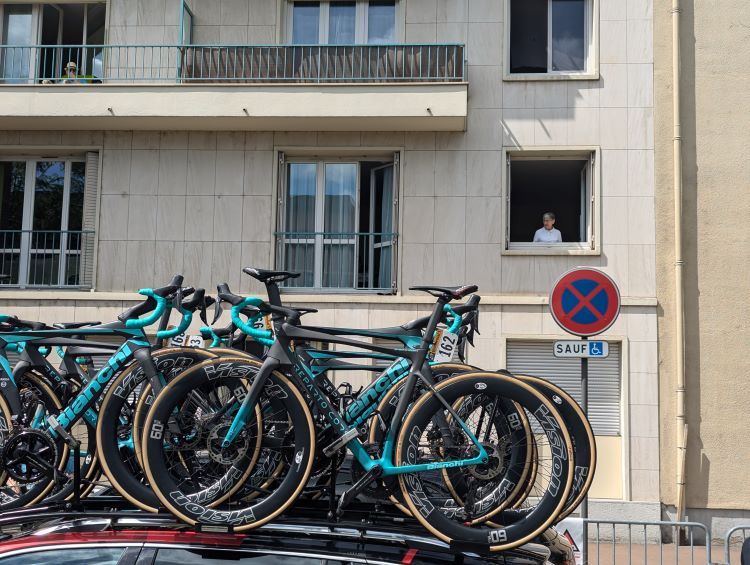
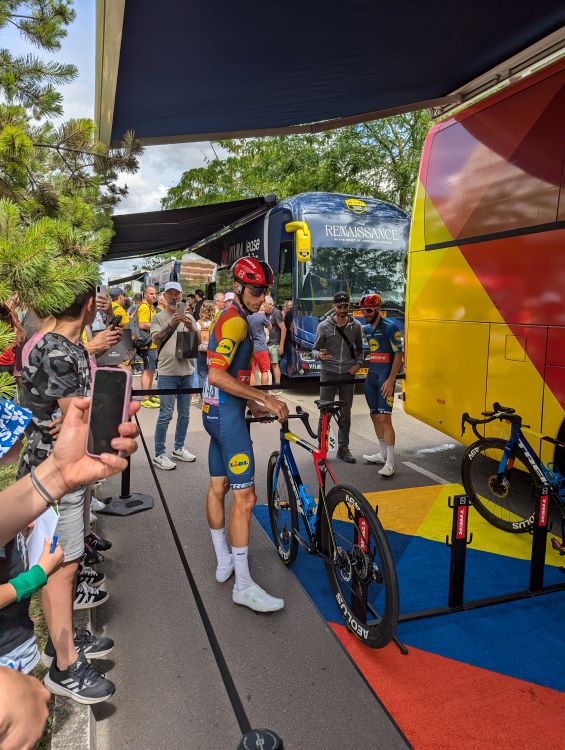
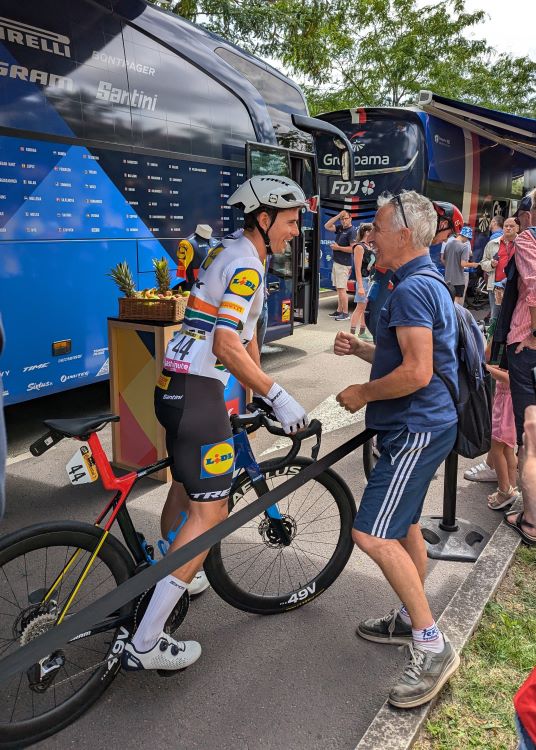
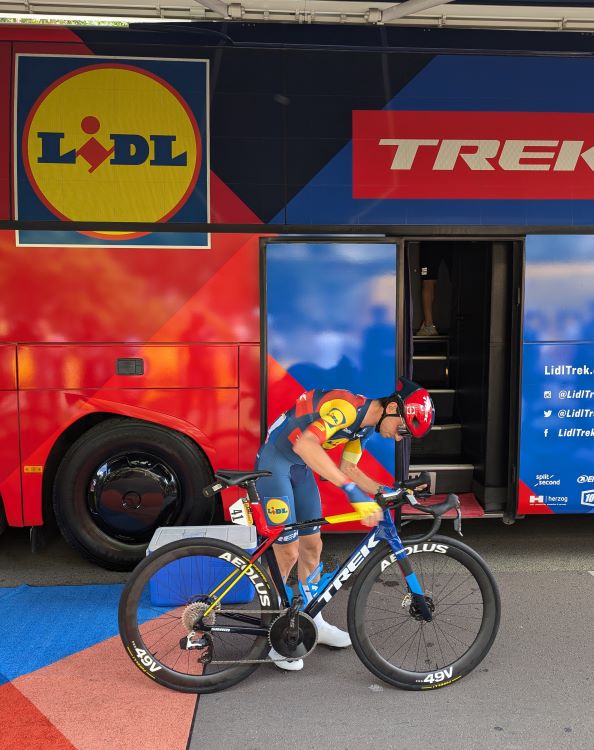
First, though, an hour before the stage start, comes the Tour procession – the cavalcade of sponsors cars that help make the Tour the spectacle it has become. Tractors, flat-bed trucks and open-top Citroen 2CVs decked out in polka dots are among the phalanx of vehicles that drive past the huge crowds in the centre of Troyes. I’ve heard so much about this aspect of the Tour – the overwhelming commercialism of the world’s biggest bike race. What I’m not prepared for is to be hit in the chest by a local speciality dried sausage, thrown by the handful into the throngs by wildly enthusiastic dancers clipped onto open-topped vehicles emblazoned with sponsors’ insignias. Soon I’m ducking as cycling caps, washing detergent, maps and much more are hurled in my general direction. Welcome to the Tour de France.
The Tour paddock
Next comes the paddock – the fenced-off area where the team buses are parked. There’s no public access here; just the teams, Tour staff and media. It’s here I meet the team behind the team at Lidle Trek, without whom the riders just wouldn’t be able to race. There are about 30 non-riding staff in each team, from drivers, mechanics and soigneurs (masseurs and assistants) to nutritionists, managers and directeurs sportif (sporting directors). The day after the stage we get a chance to look around the team bus, installed with showers, washer-dryers and ice baths – not to mention numerous changes of kit, podium wear and personalised nutrition and recovery products.
For now though, it’s off to the start. Above the clamoring fans trying to glimpse their idols as they line up on the road (which other sport lets you get this close to its stars?), the TV helicopters are starting to circle, and the anticipation is palpable. A sobering moment of silence follows as the peloton pays its respects to a fallen comrade – Norwegian rider Andre Drege had died after a crash during the Tour of Austria the day before. Then the neutralised roll-out amid a collective cheer from the crowd.
The stage start
We don’t get to see the flag drop from the commissaire’s car to denote the beginning of the stage proper. That happens a few kilometres out of town. But for the rest of the stage’s gruelling 199km there’s an expectant buzz around the town as the crowds disperse, filling out restaurants and cafes as they await the peloton’s return. (A there-and-back stage like this is rare in the Tour; normally routes are point to point.)
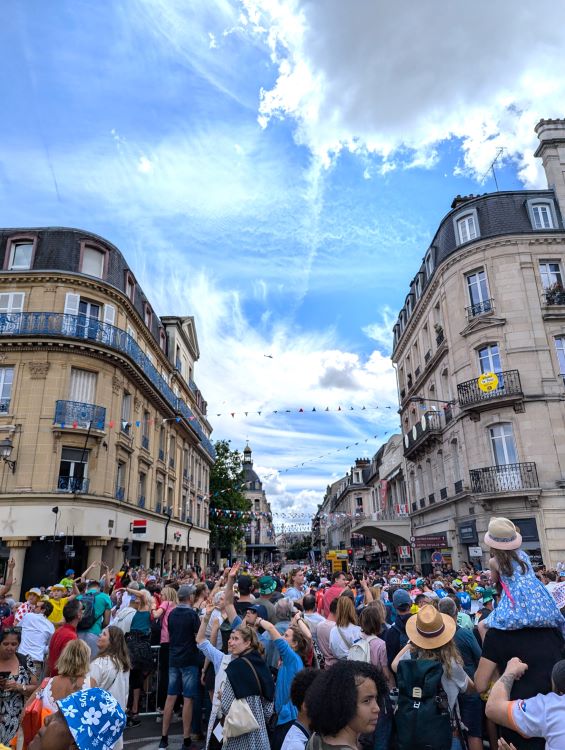
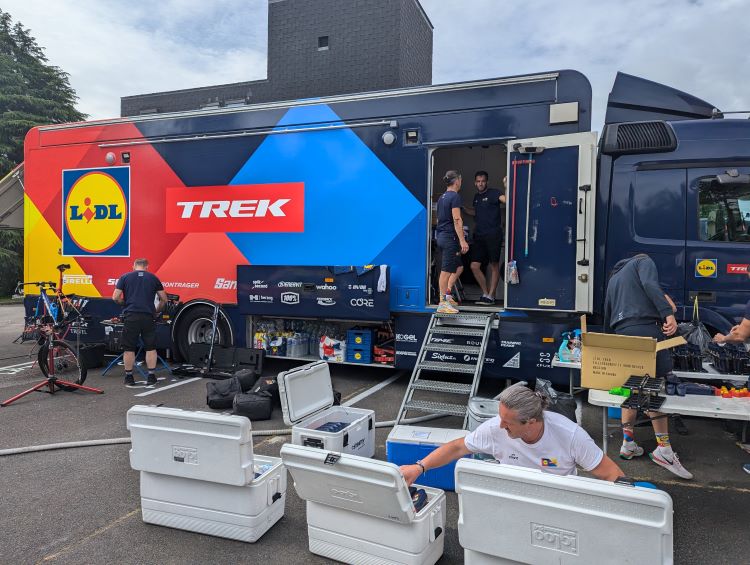
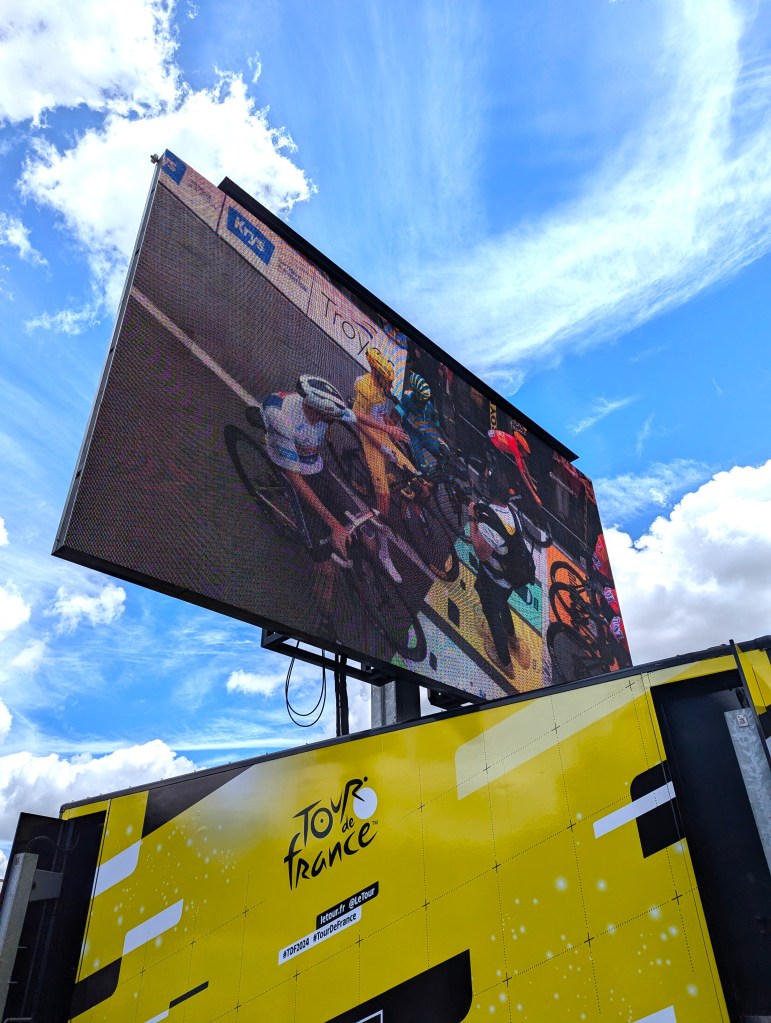
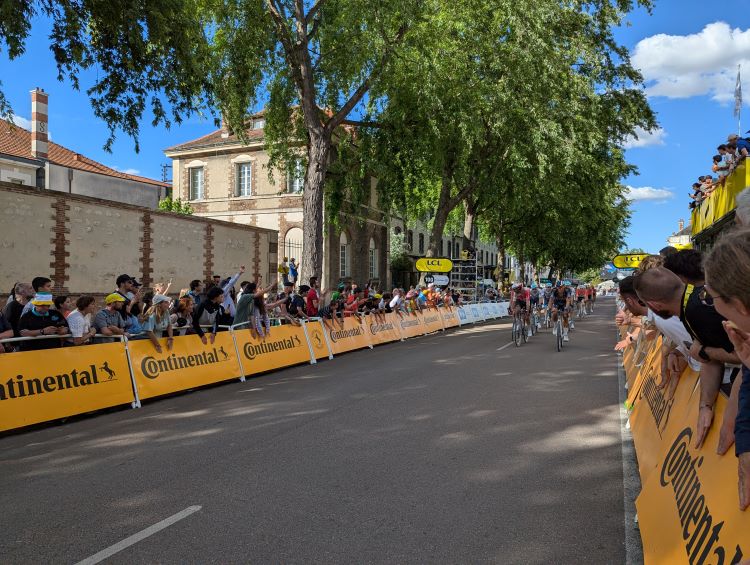
A little over four hours later, we’re poised just 75m from the finish line, waiting for the leaders to emerge. Big screens everywhere keep us up to date with the race situation. We’re rooting for Lidl Trek rider Jasper Stuyven, who we’d been so close to earlier, and who has broken clear of the lead group of five or six riders. Among those chasing him down is British rider and world and Olympic XC champion Tom Pidcock, the Ineos Grenadiers rider who won a stage of the 2022 Tour at the summit of the famous Alpe D’Huez climb.
The climax
On flatter terrain here he and his fellow chasers are agonisingly clawing back the metres between them and Stuyven in front. Stuyven has a lead of 10 seconds, which he holds for almost 5km. Soon it’s whittled down to 5 seconds, and with 1km to go the catch is made. Stuyven is unceremoniously spat out the back as his pursuers fly past at some 60kmph, riding out of the saddle towards the finish line.
Leading up to this, the Tour outriders had been whizzing past us every 30 seconds or so, each one heightening the anticipation of the crowd. As soon as the riders come into view every roadside fan to a man, woman and child starts banging on the advertising hoardings, increasing in tempo and volume as the racers get nearer. They flash past us in a blur of brightly colored Lycra and dust-covered grimaces. There’s a collective hush as they cross the line. Even from our vantage point we have no idea who’s won – though I could see Pidcock’s red and black Ineos kit right up at the front.
The margin between victory and defeat
Then the French announcer declares the winner as Anthony Turgis of TotalEnergies, his margin of victory after 199km no more than half a bike length. Turgis is yet another French winner at this year’s Tour after a drought with so few home victories in recent years. For the next five minutes dishevelled, exhauster riders cross the line in ones and twos, before the main peloton arrives and eventually the voiture balai – the ‘broom wagon’ that sweeps up the last riders on the road.
Almost as soon as the last rider crosses the line, the barriers, banners and paraphernalia that make up each stage are being dismantled and moved on to the next stage. By tomorrow, as the dust literally settles, there’ll be almost no sign that the Tour was ever here. For today though it’s been a riot of noise and color, a frenetic battle of more than 170 men and machines fighting each other on the gravel and tarmac of Troyes. I can’t believe I’ve waited this long to witness this wonderful sporting spectacle. I won’t leave it anywhere near as long to visit again







